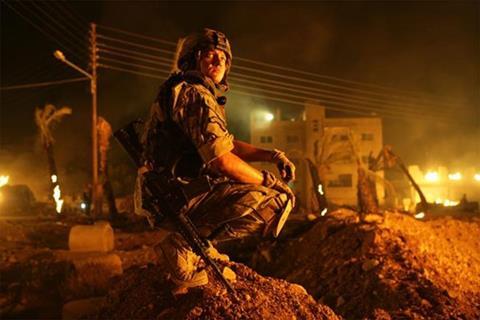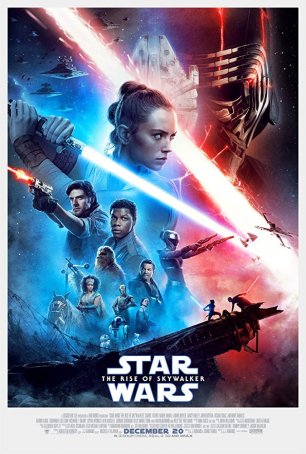The Hurt Locker
SPOILERS
Ever since I heard New York Times journalist Chris Hedges on Fresh Air on NPR one afternoon I began to think differently about war. "The rush of battle is a potent and often lethal addiction, for war is a drug." His quote opens THE HURT LOCKER, winner of Best Picture of 2009.War is a drug. Curious. It was odd to think that someone would deliberately put themselves in and return to a hellish battleground. Crave it, even. I've never been in any armed force, never been in battle. Most soldiers I've known and read about wanted to get the hell out of a war as quickly as possible. Then I thought about the medical personnel who crave the excitement of a frantic Emergency Room. Policemen who long for street action. Even those old newspaper folks who loved the adrenaline of a looming deadline. It is a specific personality type. Cutting within a fraction of a second, getting close to the fire. Those people will not have it any other way.
They may also find that when life is not so urgent, a sense of purpose is lost. The comparatively humdrum existences of the human race can't match the thrill. The hardest adaptation for a soldier isn't to a freezing foxhole or a sweltering desert, but a listless week of staring at the multitude of choices in a grocery store.
THE HURT LOCKER profiles such a person, one Sergeant First Class William James (Jeremy Renner, nominated for Best Actor). He leads a team of 3 in the U.S. Army's Explosive Ordinance Disposal (EOD) unit, sniffing out roadside bombs in Iraq in 2004. His colleagues: the Sgt. J.T. Sanborn (Anthony Mackie) and Specialist Owen Eldridge (Brian Geraghty). Their job is to keep snipers at bay while James disarms all manner of complex explosive devices. Some of the bombs (and situations) are tricky. One never knows if that taxi driver is just that, or rather an insurgent who'll use his cell phone as a detonator.
Each mission places the team amongst the ruins of warn-torn Baghdad. Strangers are everywhere, peering from apartment windows and towers, perhaps one of them waiting to watch their handiwork take out the soldiers. Sanborn and Eldridge are cautious and play by the Army manual; James dives in head first every time. He'll place himself in harm's way even when it is unnecessary. To some, this makes him a hero. To his team, it makes him reckless.
James has no choice, he has to stare into a mess of wires coiled through an abandoned vehicle, be right there until the last possible second before the explosives "will send us all to Jesus."
It's James' thing, his m.o., his kicks. But there are consequences for others as THE HURT LOCKER plays out. Things will happen that in another movie may have been a paradigm shifter for the protagonist. James remains unrepentant, as devil-may-care as ever. Sanborn, forever frustrated with his leader, will eventually drop the steel exterior and confess that we wants to return stateside and have a son. James will, in the concluding passages of this film, eventually go home to his own young son and tell him that as one gets older, you love fewer and fewer things. Perhaps at a certain point, only having one thing left. He stares at his sleeping child, but we know what true love he really speaks of. Cut to the next scene. James again suits up for another yearlong tour of bomb dispatch. It's the only way, in Mark Boal's taut screenplay based on his time as an embedded journalist. Boal probably met a few like James.
Director Kathryn Bigelow has achieved much with THE HURT LOCKER; a probing drama that allows contemplation even within a breathless narrative. The film is awfully episodic, jumping from one intense scene (be it bomb disposal or group infighting) to the next, but it is the right approach. Such is the life of a soldier. One minute, boredom, stillness, the next, unimaginable chaos.
Bigelow is known primarily as an action director for films like POINT BREAK and STRANGE DAYS, both uneven and not entirely successful but still worth seeing. Her experience serves her well as she orchestrates several bravura and memorable sequences. Perhaps the best is the lengthy standoff between the EOD team and terrorists after an ambush falls upon some British mercenaries (Ralph Fiennes among them). The mercs have captured Iraquis who were featured on some playing cards as "Most Wanted".
After much gunfire the prisoners and mercs are fatally wounded. We then watch the EOD trio tough out a long cat and mouse game with a few insurgents several yards away in a fort. It takes time. Sanborn crouches and stares with a gritty eye through the scope, waiting. James guides him, for once not playing cowboy. It's a breathtaking portion of the movie. It showcases not only Bigelow's strengths with brutal yet deft action, but also with quieter acting. Ten years ago, she made THE WEIGHT OF WATER, a film I've yet to see; it seems to be in the quieter, more art-house vein.
The director also frames a revealing scene where Sanborn and James play wrestle in the barracks one night after another hard day, a key moment. The horseplay inevitably edges toward seriousness as James goes too far and finds a knife at his throat. It is the sort of macho catharsis of excess testosterone a soldier often has. It reminded me of a night I hung with a friend from church who had just come back from the Middle East. We joined some of his military buds and eventually they all started headlocking and crashing to the floor. They couldn't dial it down. They are always on, even back home. You don't untrain that.



Comments